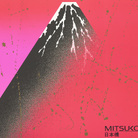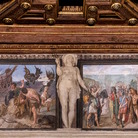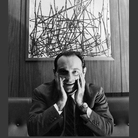Collezione Henraux 1960-1970

Dal 10 June 2022 al 17 July 2022
Milano
Luogo: Gallerie d’Italia Milano
Indirizzo: Piazza della Scala 6
Orari: Martedì, mercoledì, venerdì, sabato e domenica dalle 9:30 alle 19:30. Giovedì dalle 9:30 alle 22:30. Lunedì chiuso. Ultimo ingresso un’ora prima della chiusura
Curatori: Edoardo Bonaspetti
Costo del biglietto: intero € 10, ridotto € 8, Under 26 e Clienti Gruppo Intesa Sanpaolo € 5. Gratuito Under 18 e scolaresche
Telefono per informazioni: 800.167619
E-Mail info: info@gallerieditalia.com
Sito ufficiale: http://www.gallerieditalia.com
L’allestimento, nel suggestivo Cortile Ottagono e nel Giardino d’Alessandro delle Gallerie d’Italia di Milano, presenta 7 delle 25 sculture Henraux in collezione Intesa Sanpaolo. L’intero nucleo, per l’occasione, è stato sottoposto a un importante e innovativo intervento conservativo. Questa iniziativa si configura quale anticipazione della grande mostra che si terrà a Querceta di Seravezza, presso la sede della Fondazione Henraux, dal 25 luglio al 18 settembre. L’esposizione milanese, a partire dalla valorizzazione delle 7 sculture di Intesa Sanpaolo, presenta documenti, foto d’archivio, modelli e riproduzioni organizzati in nuclei tematici, racconta il vitale contesto in cui le sculture sono state create, la nascita della collezione Henraux e l’esempio straordinario di cultura d’impresa dato dall’azienda. Gli elementi dell’allestimento sono realizzati in marmo – materiale estratto dalle stesse cave da cui proviene quello scelto all’epoca dagli artisti per le proprie sculture – e richiamano i processi creativi che dalla materia grezza portano all’opera d’arte, e a un rapporto unico e virtuoso tra natura, cultura e industria.
Nel corso di più di 200 anni di attività, Henraux è stata protagonista di innumerevoli progetti e collaborazioni nella cultura visiva internazionale. Fondata nel 1821 dall’ex ufficiale napoleonico Jean Baptiste Alexandre Henraux e dall’imprenditore versiliese Marco Borrini, il percorso dell’azienda marmifera si intreccia con importanti contributi nel mondo dell’arte, dell’architettura e del restauro.
È a partire dal secondo dopoguerra che Henraux allaccia un rapporto straordinario con le arti visive grazie alla lungimirante direzione di Erminio Cidonio, che nel 1956 assume la carica di amministratore unico della società. In un contesto scosso da impulsi e necessità di rinnovamento, Henraux ridefinisce la propria identità imprenditoriale e culturale, cogliendo nel dinamismo e fervore artistico nazionale le opportunità in gioco tra sperimentazione scultorea e produzione industriale. L’incontro nel 1957 con lo scultore britannico Henry Moore, recatosi in Versilia per la realizzazione della monumentale opera astratta Reclining Figure destinata alla sede dell’UNESCO a Parigi, favorisce questo slancio e contribuisce a dar vita a un fiorente periodo di innovazione e ricerca artistica. In pochi anni Jean (Hans) Arp, Pietro Cascella, Rosalda Gilardi, Émile Gilioli, Jacques Lipchitz, Morice Lipsi, Joan Miró, Isamu Noguchi, Maria Papa Rostkowska, Giò Pomodoro, Antoine Poncet, Branko Ružić, François Stahly, Georges Vantongerloo e molti altri si recano a Querceta, frazione del comune di Seravezza, in provincia di Lucca, e realizzano le loro opere con le maestranze e i marmi di Henraux, contribuendo a un più ampio rilancio culturale dell’azienda e del suo territorio.
Tra la fine degli anni Sessanta e l’inizio dei Settanta, il vigore di questa eccezionale esperienza inizia ad affievolirsi per mutate strategie aziendali e, poco dopo essere stata esposta nel 1972 presso il Cortile d’Onore di Palazzo dei Diamanti a Ferrara, la collezione si disperde. Venticinque opere nel 1973 vengono acquisite dall’allora Banca Commerciale Italiana sotto la presidenza illuminata di Raffaele Mattioli, per poi confluire in quella che oggi è la raccolta d’arte moderna e contemporanea di Intesa Sanpaolo.
SCARICA IL COMUNICATO IN PDF

-
 Dal 20 November 2025 al 6 April 2026
Bologna | Museo Civico Archeologico di Bologna
Dal 20 November 2025 al 6 April 2026
Bologna | Museo Civico Archeologico di Bologna
Graphic Japan. Da Hokusai al Manga
-
 Dal 14 November 2025 al 15 March 2026
Roma | Musei Capitolini
Dal 14 November 2025 al 15 March 2026
Roma | Musei Capitolini
Cartier e il Mito ai Musei Capitolini
-
 Dal 14 November 2025 al 15 February 2026
Bologna | Palazzo Fava
Dal 14 November 2025 al 15 February 2026
Bologna | Palazzo Fava
Michelangelo e Bologna
-
 Dal 13 November 2025 al 18 April 2026
Roma | Musei Vaticani
Dal 13 November 2025 al 18 April 2026
Roma | Musei Vaticani
“L’irrefrenabile curiosità”. Capolavori del Novecento dalla Collezione di Leone Piccioni
-
 Dal 15 November 2025 al 10 May 2026
Treviso | Museo Santa Caterina
Dal 15 November 2025 al 10 May 2026
Treviso | Museo Santa Caterina
DA PICASSO A VAN GOGH. Capolavori dal Toledo Museum of Art. Storie di pittura dall’astrazione all’impressionismo
-
 Dal 8 November 2025 al 11 January 2026
Venezia | Museo Correr
Dal 8 November 2025 al 11 January 2026
Venezia | Museo Correr
CARATTERI. Calligrafia e tipografia: Corea del Sud e Stati Uniti


